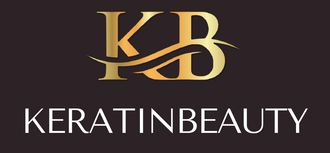Navigating the world of hair care starts with understanding your hair type. Hair is incredibly diverse, reflecting not just our personal style but also our heritage and health. Broadly classified into four major categories - straight, wavy, curly, and coily - these types are further subdivided into three subtypes (A, B, and C), making a total of 12 unique categories. This comprehensive guide aims to delve into each type and its characteristics, helping you to identify your hair type and embrace it with the best care possible.

Straight Hair (Type 1)
Straight hair is characterized by its sleek and shiny appearance, often reflecting the most light, thus appearing the most glossy of all hair types.
- 1A Hair: Ultra-fine and soft, Type 1A hair is almost translucent and can appear thin. It's prone to oiliness due to its straight nature, which allows oil to travel down the shaft more quickly.
- 1B Hair: Type 1B hair has more body than Type 1A and is not as oily. The strands are thicker and have a slight bend towards the ends.
- 1C Hair: This subtype is straight but thick and coarse. Type 1C hair tends to have a slight wave to it and is resistant to curling.
Wavy Hair (Type 2)
Wavy hair lies between straight and curly, offering a texture that has a distinctive "S" shape.
- 2A Hair: Type 2A hair is fine and thin with loose, undefined waves. It's easy to style but can be prone to frizz.
- 2B Hair: With more defined waves, Type 2B hair has a medium texture and a tendency to frizz at the crown.
- 2C Hair: This hair type boasts thicker waves, often verging on curls, and can be quite frizzy and difficult to style.
Curly Hair (Type 3)
Curly hair is known for its definite "S" shape or even "Z" shape curls, offering a voluminous look.
- 3A Hair: Curls are loose and big, with a shiny, defined pattern. Type 3A hair can lose its curl definition without proper moisture.
- 3B Hair: Medium to tight curls that range from bouncy ringlets to tight corkscrews. Type 3B has a coarse texture that needs hydration to maintain its shape.
- 3C Hair: Type 3C features tight curls or coils that pack together, giving a lot of volumes and texture. This subtype requires plenty of moisture and detangling to prevent matting.
Coily Hair (Type 4)
Coily hair is tightly coiled or kinky, offering a dense and springy texture.
- 4A Hair: Soft, tight coils that form an "S" pattern. Type 4A hair can retain moisture well but is prone to shrinkage.
- 4B Hair: With a "Z" pattern, these coils are less defined and more fragile. Type 4B hair experiences significant shrinkage and requires gentle care to prevent breakage.
- 4C Hair: The most densely packed hair, with coils that may not form a defined pattern. Type 4C is the most prone to dryness and shrinkage, necessitating regular hydration and careful handling.
Understanding your hair type is the first step toward optimal hair care. By recognizing the unique characteristics of your hair, from the texture and oiliness to the curl pattern, you can select products and styling methods that will enhance your natural beauty. Whether you're a 1A with pin-straight hair or a 4C with densely packed coils, embracing your natural hair type will unlock the door to healthier, happier hair.
Now that you're armed with the knowledge of hair types and their characteristics, it's time to explore the best care routines and products tailored for your unique hair. Dive into our collection of hair care tips and tricks to find your perfect match!
 Skip to content
Skip to content


2 comments
Deilyn Hernández Madrid
Me gusta aprender y esto me generó conocimiento de hoy en adelante mi cabello será un nuevo ser. Soy cabello rizado tipo 3. 3B
Curly Hair Salons NYC
The article “Discover Your Hair Type: A Complete Guide to Understanding Straight, Wavy, Curly, and Coily Textures” on Keratin Beauty offers an insightful exploration of the different hair types and their unique characteristics. It provides valuable information on how to identify your hair type and the specific care each texture requires. This guide is an excellent resource for anyone looking to tailor their hair care routine to enhance their natural beauty. For those seeking to nourish and support their specific hair type, check out Hairicc’s range of specialized products designed to promote healthy, vibrant hair at https://hairicc.com/new-york-city/.